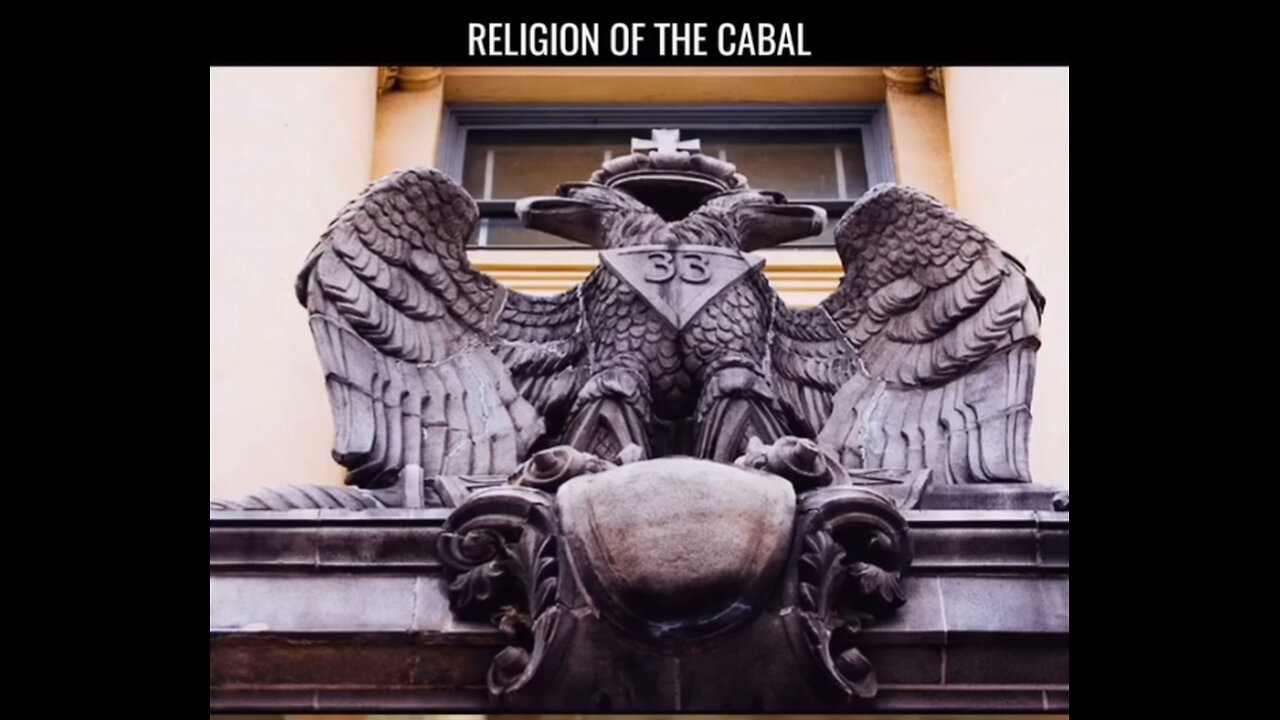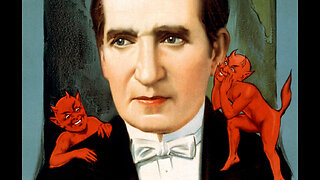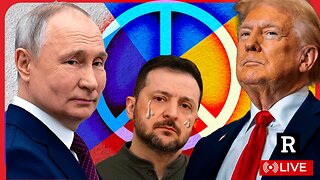Premium Only Content

Phoenix Rising: Power, Sacrifice, and Humanity’s Cycles of Destruction and Renewal
The symbolism of the phoenix rising from the ashes and the shadowy rituals surrounding figures like Baal and Moloch are more than just esoteric footnotes in ancient history or conspiracy lore. These archetypes represent deep truths about the cyclical nature of power, the intersection of the material and spiritual realms, and the consequences of humanity’s unyielding desire for dominion. To truly grasp the significance of these symbols, we must look beyond their surface meanings and explore the broader philosophical, historical, and metaphysical implications they hold.
The Cycles of Power: A Universal Blueprint
The phoenix is not merely a mythological bird; it is a profound representation of the cyclical nature of civilizations, ideologies, and power structures. History demonstrates that empires, like stars, have a life cycle. They are born in fire, rise to greatness, and eventually collapse under their own weight, only to give way to new forms.
This pattern is not confined to history books. It is encoded in natural law—mirrored in the cycles of birth, death, and rebirth that govern ecosystems, celestial bodies, and even human consciousness. The phoenix, as a symbol of renewal, serves as a reminder that destruction is often a precursor to transformation. However, for those who seek to wield power, this destruction is not always a natural event. It can be orchestrated, manipulated, and used as a tool for maintaining control.
The Hidden Hand of Controlled Chaos
The idea that certain groups intentionally embrace destruction as part of their belief system introduces a controversial but critical perspective on historical and current events. If these groups see chaos and collapse as necessary preludes to their rebirth, then societal upheavals—wars, economic collapses, and even cultural shifts—could be seen not as random occurrences but as deliberate mechanisms of transformation.
This raises profound questions: Are the cycles of history truly organic, or are they engineered by those who understand the symbolism of the phoenix? If so, the ultimate goal may not be merely the acquisition of power but the perpetuation of a belief system that spans generations. This belief system, rooted in sacrifice, renewal, and ascension, positions its adherents as stewards of a recurring cosmic drama.
Baal, Moloch, and the Commodification of the Soul
The rituals associated with Baal and Moloch—child sacrifices in exchange for power—highlight a disturbing truth about humanity’s relationship with power: it often demands a moral cost. Sacrifices, whether literal or symbolic, reflect the transactional nature of power in its darkest form. These practices, though horrifying, can be interpreted as metaphors for the commodification of innocence, creativity, and potential.
In modern terms, the “sacrifice” continues, though it has taken new forms. Today, instead of altars of stone, the sacrifices occur in the arenas of industry, technology, and culture. Human labor, privacy, and even individuality are often traded for promises of security, prosperity, and progress. Just as ancient worshipers offered their children to Moloch, we might ask whether modern society is sacrificing its collective soul to technological deities and corporate gods.
The Owl, the Eagle, and the Phoenix: A Trifecta of Symbols
Each of these symbols—the owl of Moloch, the eagle of power, and the phoenix of renewal—offers unique insights into the dynamics of leadership, surveillance, and transformation.
• The Owl: Symbolizing wisdom and the watchful gaze, the owl represents both knowledge and secrecy. It is no coincidence that elite groups are associated with the owl. It embodies their dual nature: enlightened insight and the veiling of that insight from the masses.
• The Eagle: A symbol of dominance, the eagle reflects the immediate exercise of authority. It is a bird of prey, seizing opportunities and asserting control. However, its singular focus on domination often blinds it to the long-term cycles represented by the phoenix.
• The Phoenix: More than a bird of rebirth, the phoenix symbolizes the willingness to embrace destruction as a pathway to transformation. Unlike the eagle, which seeks to hold power continuously, the phoenix acknowledges the necessity of relinquishing it temporarily to achieve a higher state.
Together, these symbols form a trinity of power strategies: the owl observes, the eagle acts, and the phoenix renews. Understanding this dynamic provides a deeper lens through which to interpret the strategies of those who wield influence.
Extraterrestrial Archetypes: Gods or Projections?
The belief in extraterrestrial beings as returning gods adds a layer of complexity to this narrative. Whether one interprets these beings as literal entities or as archetypal projections of humanity’s aspirations, their presence in mythology and modern lore underscores a recurring theme: the desire for external salvation.
Throughout history, humanity has looked to the skies for guidance, imagining gods, angels, or advanced civilizations that will descend and rectify earthly wrongs. This belief often leads to passivity, as people await deliverance rather than taking responsibility for their collective destiny. The narrative of extraterrestrial gods returning to glorify their followers may serve as a cautionary tale against surrendering autonomy in exchange for promises of enlightenment or power.
The True Cost of Power
The idea that those who consort with destructive forces ultimately face destruction themselves is a theme that resonates across cultures and religions. From Faustian bargains to karmic law, the message is clear: power gained at the expense of morality is inherently self-defeating.
Yet, this lesson is rarely heeded. Time and again, individuals and groups have sought shortcuts to power, sacrificing ethics for expediency. The phoenix may rise from the ashes, but it does so with the scars of its previous life. The question for humanity is whether we can break this cycle—whether we can achieve renewal without the need for destruction.
A Call to Awareness and Responsibility
The narratives of Baal, Moloch, and the phoenix are not just ancient myths or fringe theories. They are reflections of deeper truths about human nature, society, and the interplay between power and morality. As we navigate the complexities of the modern world, these symbols challenge us to question the structures and beliefs that shape our lives.
• Are we complicit in cycles of destruction and renewal, whether through apathy or active participation?
• Can we recognize the hidden forces—both human and symbolic—that influence our decisions and perceptions?
• Most importantly, can we imagine a future where renewal does not require sacrifice but is born of conscious evolution?
Conclusion
The story of the phoenix and its associated symbols offers a powerful framework for understanding the cycles of history, power, and spirituality. It challenges us to move beyond passive acceptance of these cycles and to take an active role in shaping the future.
If humanity can transcend the patterns of destruction and renewal, we may yet rise not as a phoenix bound to its ashes, but as a civilization capable of true transformation—a transformation that honors life, wisdom, and the interconnectedness of all things.
-
 1:57
1:57
FragmentsOfTruth
2 days agoThe Hidden Jewish Legacy of Magic's Greatest Icons: Blaine, Houdini, and Copperfield
311 -
 LIVE
LIVE
Glenn Greenwald
3 hours agoGermany's Repressive Speech Crackdown Intensifies; U.S. & Russia Meet in Saudi Arabia and Open Cooperation; Plus: An Amazing Hate Crime in Florida is Buried | SYSTEM UPDATE #408
5,009 watching -
 1:30:48
1:30:48
Redacted News
4 hours agoBREAKING! TRUMP AND PUTIN NEARING PEACE BUT EUROPEAN WARMONGERS TRYING TO STOP IT | REDACTED
104K179 -
 52:40
52:40
Candace Show Podcast
4 hours agoSaturday Night Lively: What Were They Thinking? | Candace Ep 148
89K110 -
 LIVE
LIVE
Slightly Offensive
48 minutes agoALMOST SERIOUS: How Mass Legal Immigration DESTROYED Australia | Guest: Maria Zeee
335 watching -

LFA TV
1 day agoTrump vs. Karl-Theodor zu Guttenberg | TRUMPET DAILY 2.18.25 7PM
3.06K3 -
 2:02:21
2:02:21
Revenge of the Cis
5 hours agoEpisode 1449: Boo This
41.8K9 -
 1:20:31
1:20:31
Awaken With JP
6 hours agoWiping Hard Drives, Hire a Criminal Defense Lawyer - LIES Ep 79
83K54 -
 1:02:23
1:02:23
In The Litter Box w/ Jewels & Catturd
23 hours agoDEI Kills | In the Litter Box w/ Jewels & Catturd – Ep. 744 – 2/18/2025
115K54 -
 1:06:37
1:06:37
Game On!
4 hours ago $0.58 earnedBreaking Down COLLEGE BASKETBALL BETTING LINES Like a Pro!
29.4K3